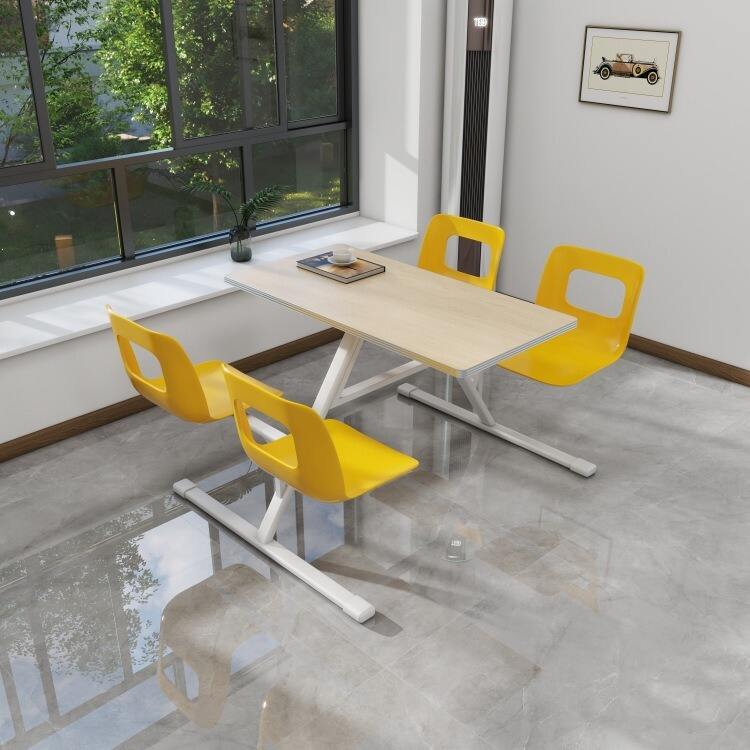Modern Restaurant Furniture Design: A Revolution in Dining Aesthetics
The landscape of restaurant interior design has undergone a remarkable transformation in recent years, with restaurant table and chair selections playing a pivotal role in defining the dining experience. Today's establishments recognize that furniture choices do more than just provide seating – they create ambiance, influence customer comfort, and contribute to the overall brand identity. The fusion of functionality, style, and innovation has given rise to exciting new trends that are reshaping how we think about dining spaces.
Restaurant owners and designers are now approaching furniture selection with unprecedented creativity, considering factors like sustainability, flexibility, and technological integration. This evolution reflects changing consumer preferences and the increasing importance of creating Instagram-worthy spaces while maintaining practical functionality.
Sustainable Materials and Eco-Conscious Design
Natural Elements and Recycled Materials
The growing environmental awareness has propelled sustainability to the forefront of restaurant table and chair design. Reclaimed wood, bamboo, and recycled metals are becoming increasingly popular choices for furniture construction. These materials not only reduce environmental impact but also bring unique character and warmth to dining spaces. Restaurants are incorporating tables made from salvaged timber and chairs featuring recycled plastic components, demonstrating their commitment to environmental stewardship.
The use of sustainable materials extends beyond just the primary construction. Upholstery choices now include organic fabrics, recycled leather alternatives, and other eco-friendly options that maintain durability while reducing environmental impact. This approach resonates with environmentally conscious diners and helps establishments build a responsible brand image.
Biophilic Design Integration
Restaurant furniture is increasingly being designed to complement biophilic elements within dining spaces. Tables and chairs now feature natural finishes that harmonize with living walls, indoor plants, and natural lighting. This integration creates a more organic dining environment that connects guests with nature while providing comfortable seating solutions.
The combination of natural materials and biophilic design elements helps create a more relaxing and wellness-oriented atmosphere, which many modern diners seek in their dining experiences. This trend has led to the development of restaurant table and chair designs that blur the lines between indoor and outdoor spaces.
Flexibility and Adaptability in Modern Dining
Modular Furniture Solutions
Contemporary restaurants require furniture that can adapt to various service needs throughout the day. Modular restaurant table and chair designs allow for quick reconfigurations to accommodate different group sizes and events. These versatile pieces can be easily combined, separated, or stored, maximizing space efficiency while maintaining aesthetic appeal.
Smart storage solutions and lightweight materials make it possible for staff to transform dining spaces quickly without compromising on style or durability. This flexibility has become particularly valuable for restaurants that serve multiple purposes, such as transitioning from casual daytime dining to formal evening service.
Indoor-Outdoor Versatility
The growing popularity of al fresco dining has sparked innovation in restaurant table and chair design for outdoor spaces. Modern furniture pieces are engineered to withstand various weather conditions while maintaining the same level of style and comfort as indoor furniture. Weather-resistant materials and treatments ensure longevity without sacrificing aesthetic appeal.
Designers are creating cohesive collections that work seamlessly in both indoor and outdoor settings, allowing restaurants to maintain a consistent look throughout their space. This versatility has become especially important as restaurants expand their outdoor dining options.
Technology Integration and Smart Furniture
Connected Dining Experiences
The integration of technology into restaurant table and chair design is revolutionizing the dining experience. Built-in charging stations, LED lighting, and even interactive surfaces are becoming more common in modern restaurant furniture. These features enhance customer convenience while creating unique dining experiences that appeal to tech-savvy patrons.
Smart materials that are easier to clean and maintain are also gaining popularity, with antimicrobial surfaces and self-cleaning coatings becoming more prevalent in restaurant furniture design. These innovations improve operational efficiency while ensuring high standards of hygiene.
Ergonomic Innovations
Advanced ergonomic design is transforming traditional restaurant seating. Modern chairs are engineered to provide optimal support and comfort for extended dining experiences. Designers are incorporating adjustable elements and ergonomic principles while maintaining aesthetic appeal, ensuring that style doesn't compromise comfort.
The focus on ergonomics extends to table design as well, with considerations for optimal height, accessibility, and space efficiency. These improvements enhance the overall dining experience while supporting the well-being of guests.
Frequently Asked Questions
How often should restaurants update their furniture?
Restaurant table and chair sets typically need updating every 5-7 years, depending on wear and tear, changing design trends, and the establishment's positioning. High-traffic restaurants might need more frequent updates, while premium venues with quality furniture might extend this timeline with proper maintenance.
What materials offer the best durability for restaurant furniture?
Commercial-grade hardwoods, metal alloys, and high-quality composites typically offer the best durability for restaurant furniture. These materials can withstand heavy use while maintaining their appearance. The choice should balance durability with the restaurant's aesthetic goals and budget considerations.
How can restaurants balance style with comfort in their furniture choices?
The key is selecting restaurant table and chair designs that incorporate ergonomic principles while maintaining visual appeal. Working with experienced commercial furniture designers can help identify pieces that offer both comfort and style. Testing furniture before purchase and gathering customer feedback can also help ensure the right balance is achieved.


